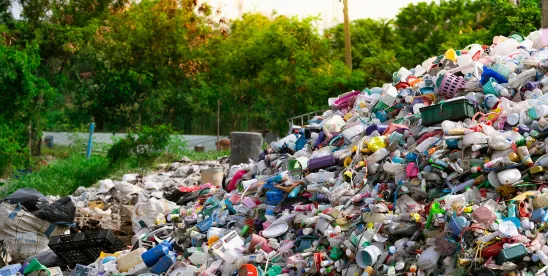| Go-To Guide: |
|
Extended Producer Responsibility (EPR) Laws at a Glance
Extended Producer Responsibility (EPR) laws continue to proliferate in the United States, presenting significant operational challenges for consumer packaged goods companies. Earlier in 2024, Minnesota became the sixth state to enact a broad packaging EPR law, joining California, Colorado, Maine, Oregon, and Maryland in the emerging trend of states imposing responsibility for end-of-life management for single-use packaging on producers. EPR laws intend to shift the cost of waste management, traditionally borne by municipalities, to producers of single-use packaging. By shifting this financial responsibility, these laws aim to ease the financial burden on local governments, while in theory providing incentives to producers to improve and adapt product packaging to meet recycling standards and, thereby, reduce landfill waste.
One way that EPR laws intend to promote such packaging innovation is by setting targets for recyclability rates and source reduction. The EPR programs in California and Oregon prescribe recycling goals, whereas Maine and Colorado seek to establish these rates through regulatory rulemakings. Most critically, California’s EPR law contains three primary components:
| 1. | 25% source reduction of plastic packaging and food ware by 2032; |
| 2. | 100% of packaging and plastic food ware must qualify as recyclable or compostable by 2032; |
| 3. | 5% plastic packaging and food ware recycling rate by 2032. |
The other states’ targets tend to be less ambitious than California’s. For example, Oregon aims to have 70% of plastic packaging recyclable by 2050. Minnesota focuses on producers covering recycling costs, with the goal of producers covering 90% of net recycling costs by 2031.
The laws focus on single-use packaging and food service items that are ultimately discarded in the states, with some common exemptions for products like prescription drugs, medical devices, infant formula, and long-term packaging. However, the EPR laws vary in material ways, leading to a patchwork of regulation across the United States. For example, the laws contain differing exemptions for products like drugs. Additionally, California regulates secondary and tertiary distribution packaging used in the supply chain. The other states have various exemptions for business-to-business transactions or packaging used solely in transport rather than at retail endpoints.
Producer Responsibility Organizations
As part of the end-of-life management, producers must join producer responsibility organizations (PROs), which aid in the implementation, administration, and management of the various EPR laws. Producers will remit fees to the PROs and states that will help create and implement plans to collect and recycle covered packaging. For example, California’s Department of Resources Recycling and Recovery (CalRecycle) will collect $500 million annually from producers, through the PRO, from 2027-2037. These fees will include an “eco-modulation” component, meaning generally that fees will be higher for companies that produce less recyclable material, and lower for companies that produce more recyclable material.
Circular Action Alliance (CAA) is the approved PRO in California and Colorado. To achieve more regulatory continuity across states, consumer product companies should consider registering for CAA and encouraging its approval as the PRO in the remaining states. Producers have an Oct. 1, 2024, deadline to register with CAA in Colorado.
CAA will be issuing more guidance in fall 2024 regarding producer registration and reporting logistics. Notably, while CAA initially allowed for producers to register just at the parent company level (and essentially consolidate registration across a corporate structure), it has subsequently clarified that producers will need to register and report at the individual subsidiary level.
Future Implications and Preparing for EPR Implementation
The status of each EPR law varies. California, Colorado, Maine, and Oregon are all in the process of promulgating regulations to implement their respective laws. Minnesota is expected to begin drafting its regulations soon given that it has until summer 2025 to adopt its implementing rules.
The specific reporting requirements related to these EPR laws remain unclear, and further clarity will only emerge as regulations continue to develop. Meanwhile, Maryland has passed legislation establishing a framework for a broad EPR packaging law in the state but is still working to develop its specific EPR framework. Additionally, numerous states have proposed EPR legislation, including Hawaii, Illinois, Massachusetts, New Hampshire, New York, New Jersey, North Carolina, Rhode Island, Tennessee, and Washington.
Given the lead time it will take to adjust packaging to meet these new packaging requirements, and the sourcing decisions that companies will face in coming years, companies should consider immediately beginning to gather data related to their packaging, assessing the various EPR laws to determine applicability and timing, and engaging with CAA and other stakeholders to ensure the regulatory process progresses in a measured manner. Product producers might also wish to budget for EPR laws, consider redesigns of packaging, and prepare a tailored EPR program, as more states may well adopt EPR laws.
Related Greenwashing Laws
To regulate green marketing claims, California has enacted two notable laws: SB 343 (referred to as the “Truth in Labeling” or “Truth in Recycling” law) and AB 1201 (regarding biodegradable/compostable claims). Stated simply, SB 343 prohibits claims that packaging is recyclable, including use of the chasing arrows symbol, unless CalRecycle determines the packaging material meets recyclability standards in the state. CalRecycle has published a preliminary characterization study identifying which materials are and are not recyclable under the law. The final characterization study is expected from CalRecycle this year, at which time an 18-month compliance period will begin. Meanwhile, AB 1201 bans the sale of products or packaging labeled “compostable” unless the product meets specified standards and criteria. The law also arguably prohibits biodegradable claims entirely, although such a reading raises significant First Amendment free speech questions.






 />i
/>i
